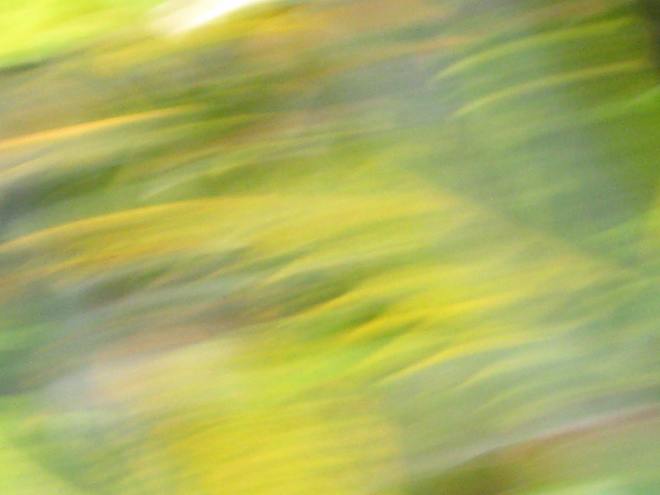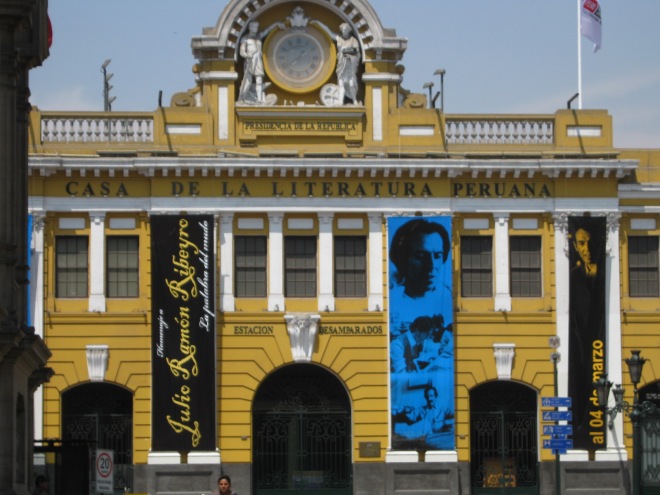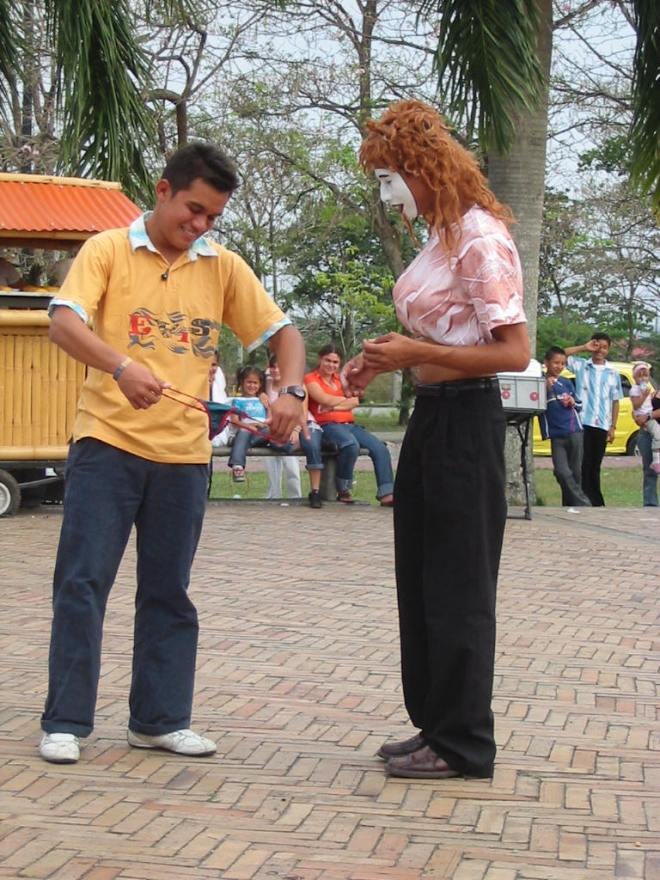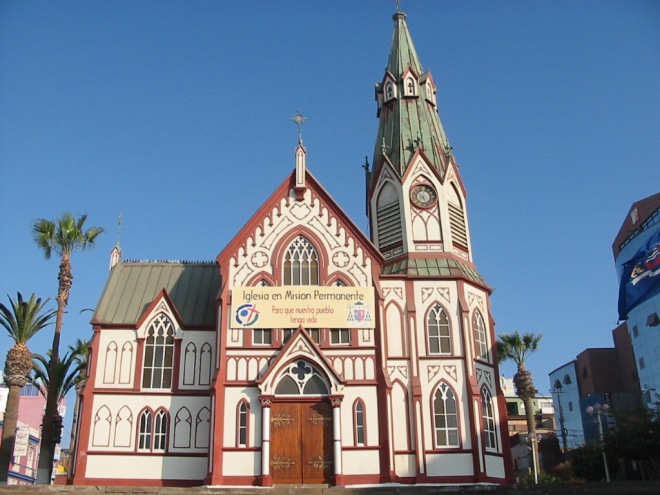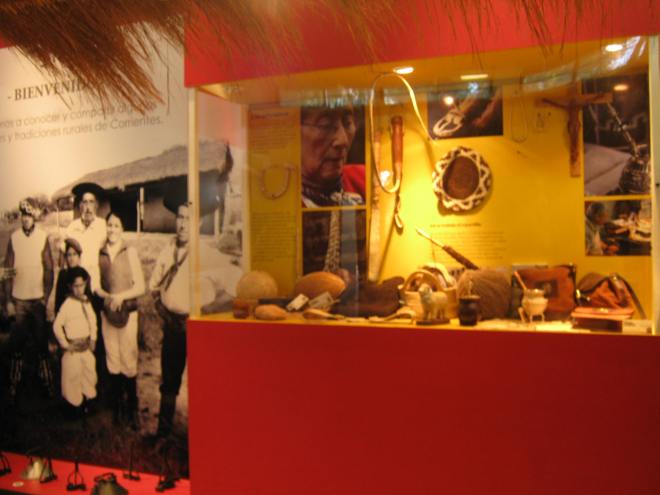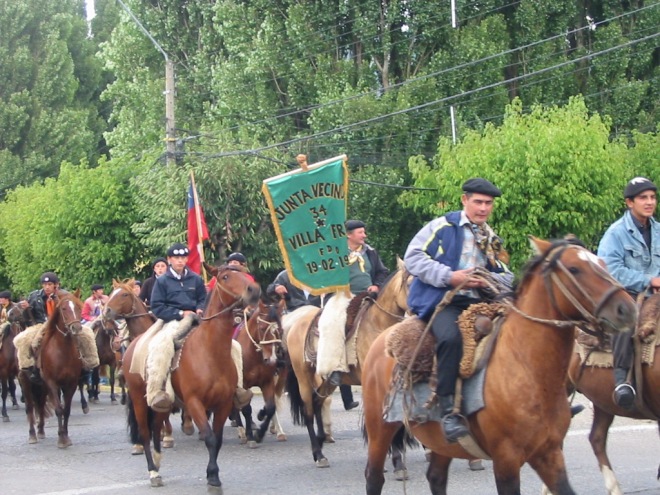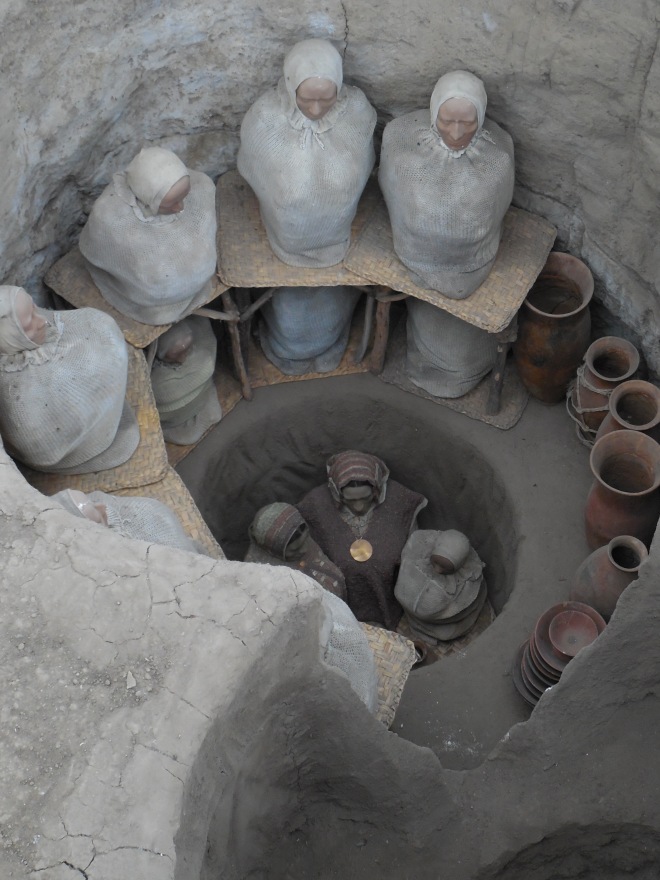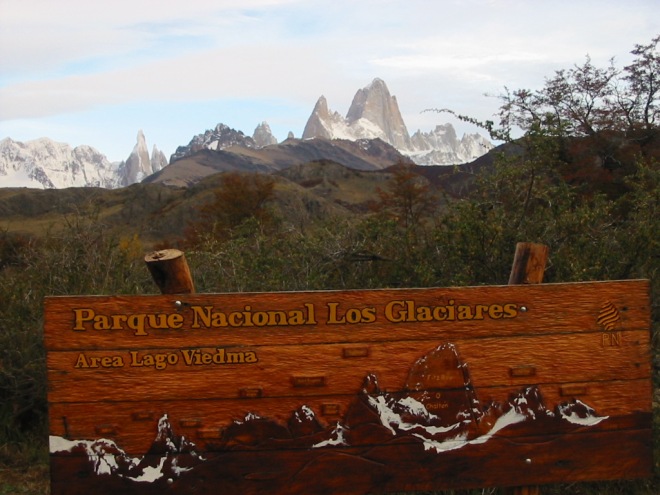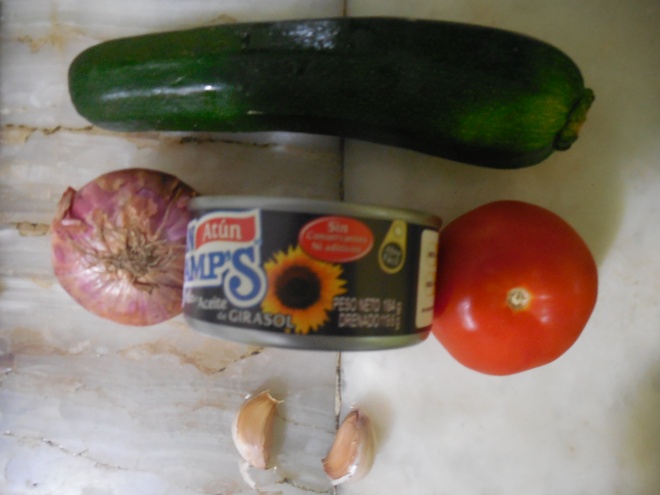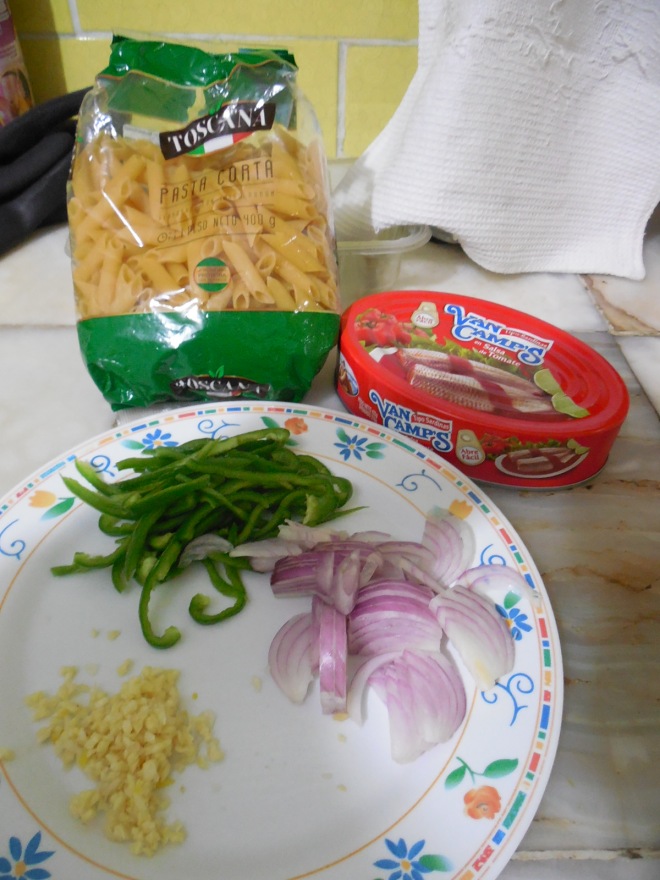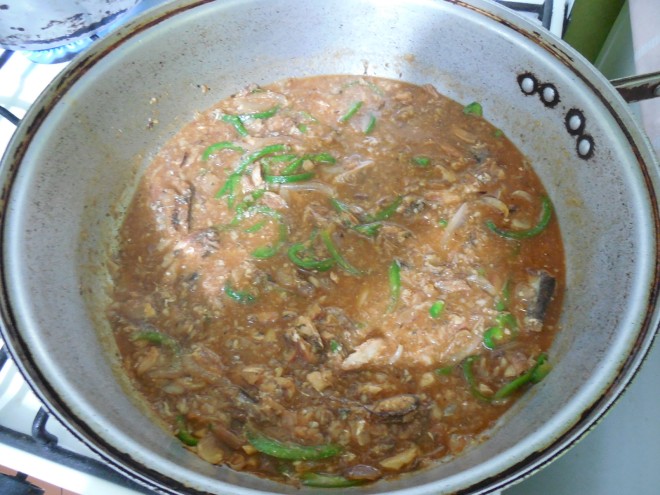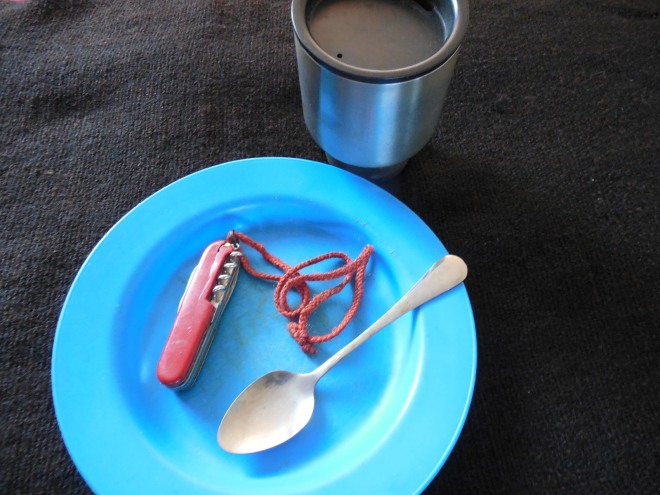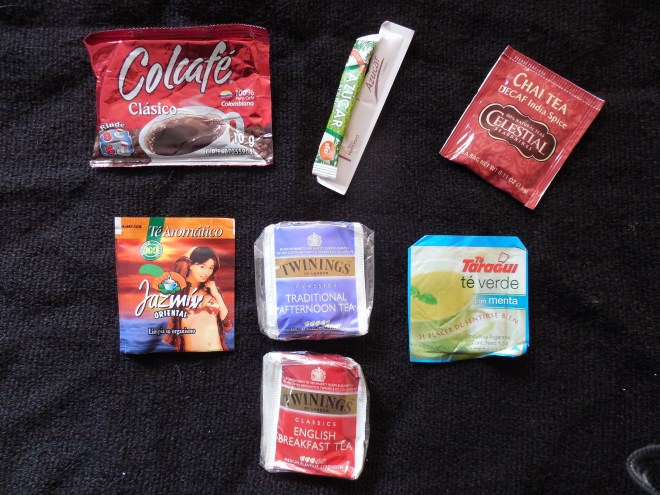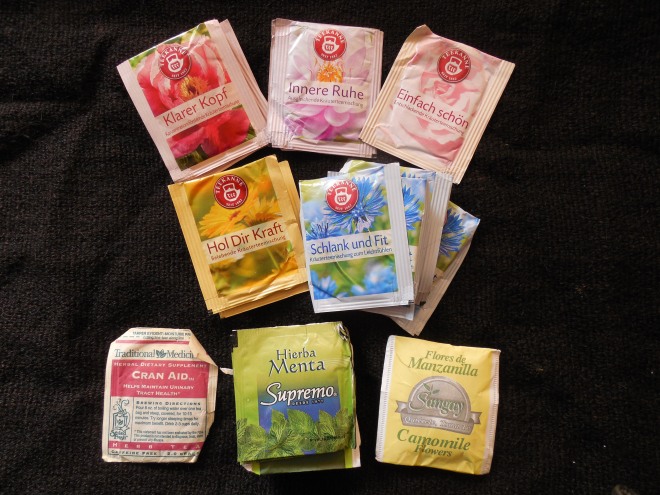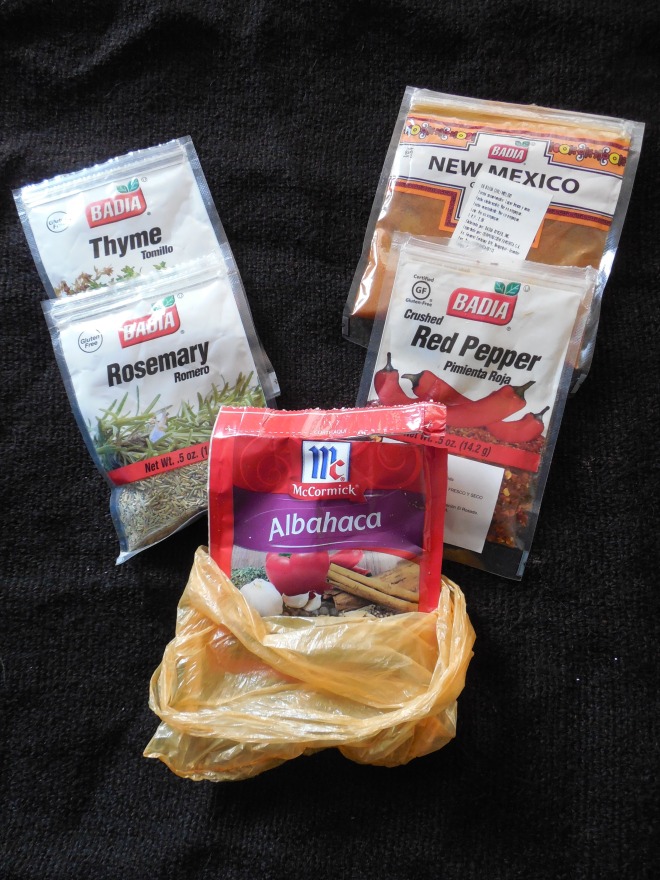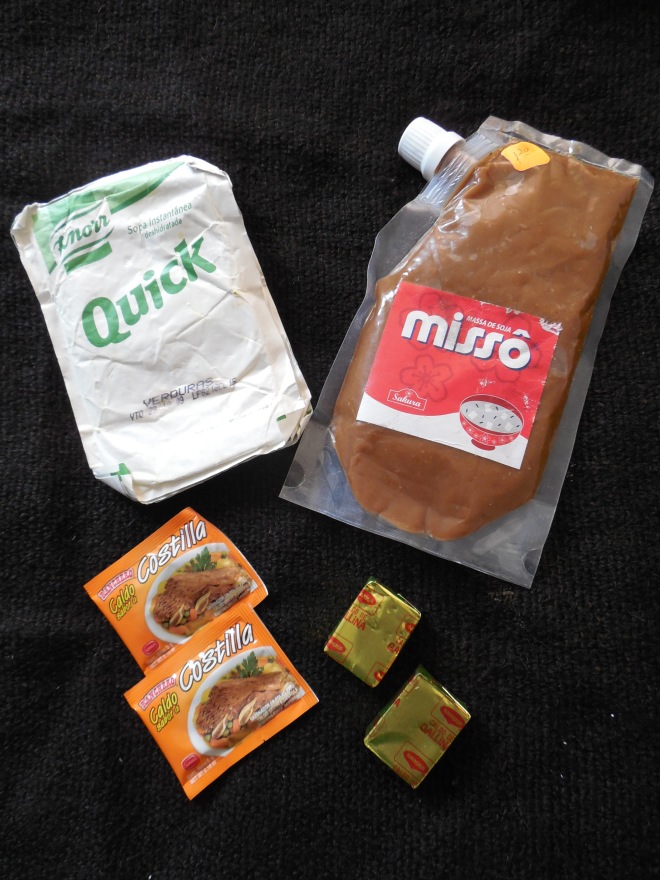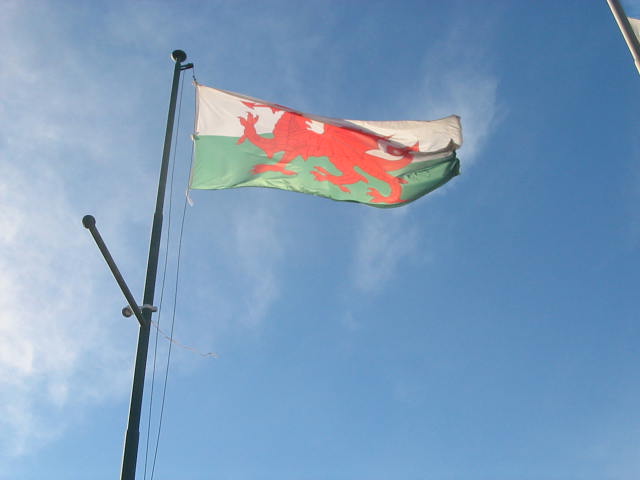
The Welsh flag flying over Trelew. photo © Lorraine Caputo
Y mae Patagonia yn annwyl i mi,
Gwlad newydd y Cymry mwyneiddlon yw hi;
Anadlu gwir ryddid a gawn yn y wlad,
O gyrhaedd gormesiaeth a brad:
Cytgan:
Gwlad, gwlad, pleidiol wyf i’m gwlad,
Tra haul y nen uwchben ein ,
O! bydded i’r Wladfa barhau.
– – – – –
Patagonia is dear to me,
The new land of the noble Welsh people;
True freedom we breathe in our new country,
Far from the reach of oppression and betrayal:
Chorus:
Nation, Nation, I am faithful to my Nation.
While the sun rises above the land,
Oh! may the Settlement continue.
– Gwlad Newydd y Cymry (“The New Country of the Welsh”)
After six centuries of English occupation, a group of Welsh refugees left their birthland and journeyed to the Argentine Patagonia. They were yearning for cultural and economic freedom. Two months of sailing, four deaths, two births and one wedding later, over 160 passengers on the Mimosa landed on these desolate shores on 28 July 1865, in the midst of winter.
And these Welsh immigrants would accomplish what no other European previously could: They established permanent colonies in the wild Patagonia.
In Welsh, these Patagonian settlements are called Y Wladfa (The Colony) or Wladychfa Gymreig (The Welsh Settlement). Their isolation from the British Isles helped the Welsh to preserve their customs, language and literary traditions. You can still find hand-carved love spoons, and witness the bardic traditions of the Gorsedd and Eisteddfod. In the many of the villages these Celts established, tea houses continue to present the traditional afternoon repast.

The caves where the Welsh first lived upon arriving at Punta Cuevas, Puerto Madryn. photo © Lorraine Caputo
A Short History of the Welsh Settlements
For the first year, the settlers lived in caves they had dug into the soft-stone shoreline of a place they called Porth Madryn (Puerto Madryn). Later they migrated to the Chubut River Valley where fresh water was more plentiful. More refugees came, this time from the U.S., bringing essential agricultural skills. Within several decades, Welsh villages stretched from Puerto Madryn and Rawson along the Atlantic seaboard to Esquel and Trevelín in the Andes. A railroad took international award-winning wheat to ports from where it was shipped around the world.
Those Welsh settlers lived peaceably with the local Aónikenk (Tehuelche) indigenous nation. Unfortunately, they unsuccessfully protected them from General Roca’s Campaña del Desierto (1879-1884), which sought to erase all traces of the native nations from Argentina.
Welsh life on these Patagonian plains is recounted in the Welsh-language book Dringo’r Andes (1904) by Eluned Morgan, daughter of Lewis Jones, one of the founders of the Welsh settlement.
Welsh language and culture faced many challenges in the 20th century. During the 1930s, the Argentine government instituted restrictions on the speaking of foreign languages, thus relegating Welsh to the homes. In 1949, then-president Juan Perón declared Chubut Province to be unsuitable for wheat cultivation, which lobbed a blow to the region’s main export. The military dictatorship (1976-1982) banned people from giving Welsh names to their children.
Since 1997, the Welsh Language Project has helped to revive and fortify the language in the Patagonia. Welsh is now taught in many primary schools in the region, and there are bilingual (Welsh-Spanish) schools in Trelew, Esquel and Trevelín. Today, people who speak the tongue as their first language number between 5,000 and 12,000; and as a second language, as many as 25,000. Descendants of the original Welsh settlers are about 50,000.

Traditional Welsh dancing. photo © Lorraine Caputo
Celebrations in the Welsh Heartland
Welsh Patagonia has several important celebrations tied to its culture and history. These are perfect opportunities to see traditional dances, hear age-old music and partake of a Welsh tea.
One prominent feast day falls on 1 March, when Saint David (Dewi Sant / San David), the patron saint of the Welsh, is fêted.
On 28 July, the big festival is the Fiesta del Desembarco (Gwyl Glaniad), marking the anniversary of the Welsh arrival in the Patagonia. If you happen to be in Argentina’s Welsh Heartland at this time, be sure to stop by a local chapel (capilla) and celebrate with a traditional Welsh tea.
Throughout the year occur Eisteddfod bardic competitions in the different towns.

The Gorsedd circle in Gaiman. photo © Lorraine Caputo
The Bardic Tradition
Deriving from the word eistedd (to sit), the Eisteddfod is an ancient custom among Welsh bards that dates back to the 12th century when Lord Rhys hosted the first event at his castle in Cardigan. Poets and musicians competed to win a seat at Lord Rhys’ table. Now the grand prize is a handcrafted chair. The tradition faded over the centuries until it was revived in 1792.
The Eisteddfod was one tradition the Welsh immigrants brought to Patagonia. The first event was celebrated on Christmas Day of 1865. In the early years of the colony, open-air competitions were held. The first hand-carved seat was awarded in 1880. Modern events include not only poetry and music (in Welsh and now also in Spanish), but also dance, crafts and other arts. Judges come from the Patagonia and from Wales.
Many Patagonian Welsh communities have their own Eisteddfod. Trevelín’s is the first weekend of May and Puerto Madryn’s is the first weekend of October. The Eisteddfod de la Juventud (Youth Eisteddfod), held the second and third weekends of September, happens in Gaiman.
The provincial-level competition’s opening ceremony, the Gorsedd, is held in Gaiman the Thursday before the Eisteddfod de Chubut. The Chubut Eisteddfod occurs in Trelew in October.
More information about the Patagonian events, contact the Asociación Eisteddfod del Chubut.
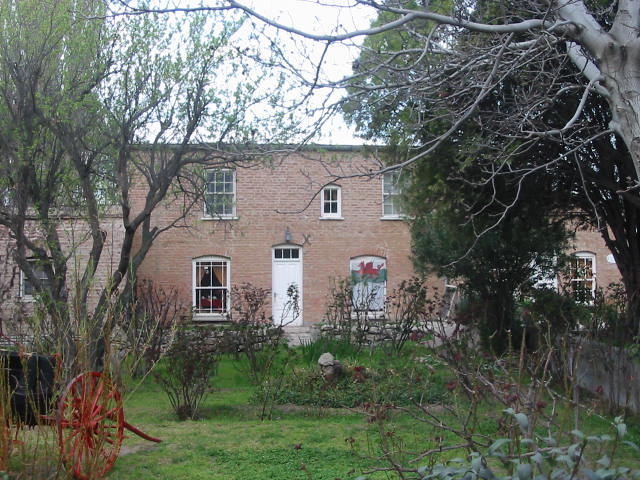
Gwesty Plas y Coed, one of Gaiman’s tea house B&Bs. photo © Lorraine Caputo
Lodging in the Welsh Heartland of the Argentine Patagonia
Hotels are common throughout the Welsh Heartland. If you are traveling in a group, check out cabañas (cabins) or seasonally let apartments (departamento de alquiler temporario) for a more economical choice.
Budget travelers will find camping in every town. Hostels (hostal, albergue) are available in Puerto Madryn, Trelew, Esquel and Trevelín. Residenciales and hospedajes (both names for basic inns) are another inexpensive option.
If you would like to immerse yourself in the region’s traditions, then stay in a Welsh bed and breakfast (hostería) in Gaimán or Trevelín.
In the low season (particularly winter), some hotels, hostels and campgrounds close. In summer, demand for any kind of lodging is high; reservations are advisable. During the high seasons (summer and winter), prices increase.
Culinary Delights in Argentina’s Welsh Heartland
Welsh dishes such as shepherd’s pie (a meat and vegetable pie topped with mashed potatoes and baked), cawl (beef or mutton stew) and Welsh rarebit (toast topped with a cheese-beer sauce) are available at more traditional restaurants. Roast lamb (asado de cordero) is served with mint sauce.
The region’s most famous gastronomic offering is the Welsh tea. Accompanying the pot of tea is a wide variety of homemade goods. Savory dishes include fresh bread, butter, cheese and sandwiches. For the sweet tooth are an assortment of cakes and scones, marmalade and the famous cacen ddu (torta negra galesa / Welsh black cake). Teahouses typically serve 3-8 p.m. At many you can choose to partake of only savory dishes or only sweet. Some charge less for the second person. The best places to sit down to a Welsh tea are Gaiman and Trevelín.

Magellanic penguin at Punta Tombo. According to some linguists, the word “penguin” comes from the Welsh pen gwyn, meaning “white head.” photo © Lorraine Caputo
The Welsh Settlements
Argentina’s Patagonian Welsh settlements are all in Chubut Province. The most visited are along Ruta 3, the highway that hugs the South Atlantic seaboard. This is where the history of Y Wladfa begins: Puerto Madryn, Rawson, Trelew, Gaiman, Dolavon and 28 de Julio. Two other important towns, Esquel and Trevelín, lie far to the west, at the base of the Andes. The furthest south village founded by the Welsh is Sarmiento.
Not only do all of these destinations have Welsh roots, but they also offer a host of other things to see and do. The region has stunning nature reserves where you can observe wildlife. Offshore, southern right whales, dolphins and other sea mammals pass on their annual migrations. These Patagonian plains are dotted with petrified forests, fossilized dinosaurs and archaeological sites.
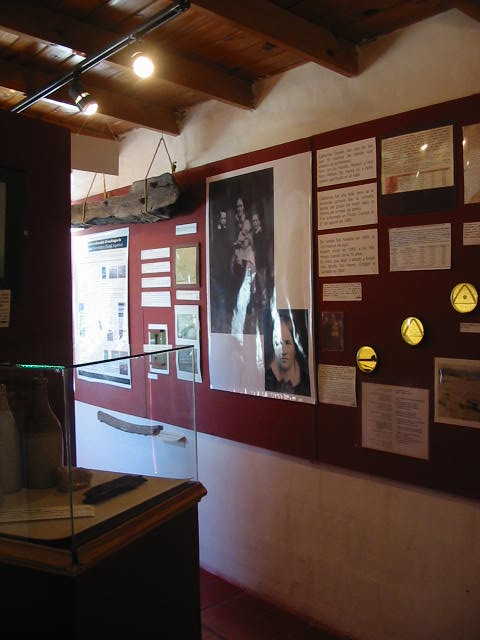
Inside the Museo del Desembarco, Punta Cueva. photo © Lorraine Caputo
Puerto Madryn
(Porth Madryn)
Puerto Madryn lies on the west coast of Golfo Nuevo, south of the Valdez Peninsula. This was the original Welsh settlement in Argentina’s Patagonia. On the site of the caves where the immigrants first lived is the Museo del Desembarco. Another nod to Madryn’s Celtic roots is a monument to the Welsh colonists on the city’s waterfront (Avenida Julio Argentino Roca and Manuel Belgrano).
The city has many other museums, from the region’s history to art. Two excellent ones teach specifically about the Patagonia’s natural environments, both on land and in the ocean: Museo Oceonográfico y de Ciencias Naturales and Ecocentro Pampa Azul.
Puerto Madryn is a perfect home base for wildlife observation safaris. A cruise between June and December will allow you to see migrating southern right whales (Eubalaena australis). All-day tours depart for Área Natural Protegida Península Valdés where there are significant populations of southern elephant seal (Mirounga leonina), South American sea lion (Otaria flavescens); and Magellanic penguins (Spheniscus magellanicus).
The seas here also welcome humans to come and play. You can practice wide variety of watersports, including scuba diving, wind and kitesurfing, and kayaking.
Puerto Madryn has a full calendar of festivities throughout the year. Semana Santa (moveable feast: March / April) features a Vía Crucis Submarino (Underwater Stations of the Cross). June marks the beginning of whale watching season. 28 July, of course, is a big party, with the Fiesta de Desembarco celebrating the Welsh arrival to the Patagonia and the city’s birthday. Gastronomy lovers should come in November for the Fiesta Nacional del Cordero (National Lamb Festival). December is time for the Fiesta Nacional del Buceo (National Scuba Diving Festival).

Capilla Moriah in Trelew. Many of the original Welsh settlers are buried here. photo © Lorraine Caputo
Trelew
(Tre Lew / Lewis’ Town)
– 70 kilometers south of Puerto Madryn
Trelew was founded in 1884 as the main hub of the Central of Chubut Railway. Today, this town with a strong Welsh identity is the hub for visiting other villages in the Welsh Heartland: Rawson, Gaiman, Dolavan and 28 de Julio.
Several Welsh churches still exist in Trelew, among them are Drofa Dulog, Moriah and Tabernacl. Museo Pueblo de Luis, located in the former train station, has displays about the indigenous Tehuelche nation and the Welsh settlers.
Other museums of interest are Museo Muncipal de Artes Visuales, covering the arts, and Centro Cultural por la Memoria, which teaches about the 1972 massacre and human rights. Museo Paleontológico Egidio Feruglio, one of Argentina’s finest museums, showcases the region’s many species of dinosaurs.
To check out modern-day species of the region, go to Área Natural Protegida Punta Tombo (123 kilometers southeast of Trelew). This fantastic excursion goes to the largest Magellanic penguin colony outside of Antarctica. The best time to go is during mating and nesting season, between September and April. Closer to town is Reserva Natural Municipal Laguna Cacique Chiquichano, a perfect place for observing over 100 species of birds, including flamingos.
Trelew’s Welsh community celebrates the arrival of their first colonizers on 28 July. Capilla Moriah and other regional chapels serve traditional tea on that day. The Eisteddfod, the two-day annual festival celebrating Welsh culture and art, is in mid-October. The Fiesta Provincial de Pingüino welcomes the spring arrival of penguins (September). Trelew’s birthday party is 20 October.
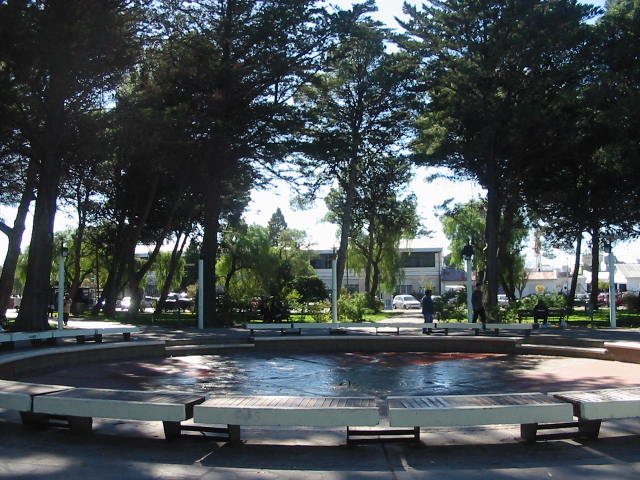
Plaza Rawson. photo © Lorraine Caputo
Rawson
(Tre Rawson / Rawson’s Village)
– 82 kilometers south of Puerto Madryn
Rawson was the second village the Welsh settlers established (1865) as they moved southward in search of fresh water. It is the capital of Chubut Province. The city lies seven kilometers from the mouth of the Río Chubut, where Puerto Rawson is. Also on the coast is Playa Unión (5 kilometers from Rawson), a great place to watch Commerson’s dolphins (tonina overa, Cephalorhynchus commersonii); this beach town has excellent camping.
The Welsh chapel, Ricardo Berwyn, was built in 1881. The city has few museums. The most noteworthy is the Museo Regional Salesiano, which covers the human and natural history of the region.
Rawson holds several festivals: Fiesta Nacional del Atlántico Sur (January), Fiesta Nacional de los Pescadores and the Fiesta del Río (February), among others. Its founding day is 15 September.

Ty Te Caerdydd, where Princess Diana had her Welsh tea in Gaiman. photo © Lorraine Caputo
Gaiman
(Aónikenk-Tehuelche word meaning whetstone)
– 17 kilometers west of Trelew
Of all the Welsh villages in the Chubut River Valley, Gaiman has one of the strongest cultural identities. Its restaurants serve delectable Welsh teas in any season. This village is the venue for the Youth Eisteddfod in September and the Gorsedd in October. Gaiman’s main Welsh churches are Bethel, Vieja Bethel and Ebenezer. There are others nearby. Museo Primera Casa de Gaiman (Calle Eugenio Tello and Juan C. Evans) and Museo Histórico Regional (Calle Sarmiento and 28 de Julio) both reveal aspects of early Welsh life in the Patagonia. Another typical Welsh house-cum-museum is Casa del Poeta, dedicated to poet-journalist Evan Thomas (Avenida Almirante Brown 328).
But not everything is about Wales in Gaiman. Parque Paleontológico Bryn Gwyn (8 kilometers south) is an excellent place to see Patagonian fossils still in their excavation sites. The park has several hiking trails and guided tours.
Besides the Gorsedd and Eisteddfod festivities, Gaiman also hosts the Fiesta del Citron (April). The town celebrates its founding day throughout the month of August.

The canals of Dolavon. photo © Lorraine Caputo
Dolavon
(Dôl Afon / River Meadow)
– 36 kilometers west of Trelew
Dolavon was the center of Welsh Patagonia wheat production. Canals through the town once channeled water to fields and grist mill. The mill, Molino Harinero, is now a museum and restaurant (Calle Maipú 61). Dolavon’s surviving Welsh church is Carmel.
Dolavon is the venue for the province’s largest Carnaval celebration (moveable feast: February / March)
º
28 de Julio
– 51 kilometers west of Trelew
28 de Julio is one of the youngest Welsh settlements and home to only about 100 families dedicated to farming. The main attractions are the Welsh Bethel Chapel and the Chacra Histórico, which showcases antique farm implements. The first week of each month is the Feria de Productores, featuring the area’s products.

The mountains surrounding Esquel. photo © Lorraine Caputo
Esquel
(Tehuelche: Esgel Kaik / fields of thistles or quagmire)
– 602 kilometers west of Trelew
Esquel, in western Argentina at the foot of the Andes mountains, has so many attractions luring travelers to it that it is hard to believe it also has Welsh roots! This town does have a bilingual school – and the obligatory Welsh church, Capilla Salem (built in 1915).
Most travelers come here for the fantastic outdoor activities. There is trekking in Parque Nacional Los Alerces and Parque Nacional Lago Puelo. Or you can set off to explore ancient volcanoes or glaciers’ ice tunnels, or run the white waters of the local rivers. Esquel is also a popular winter destinations, thanks to its excellent ski facilities at La Hoya.
This town’s world-wide fame, though, is the Old Patagonian Express (known locally as el Viejo Expreso Patagónico or La Trochita), a steam train that makes its home here. It offers excursions year-round. Most runs go round trip to Nahuel Pan, a Tehuelche-Mapuche hamlet with the Museo de Culturas Originarias Patagónicas dedicated to the indigenous cultures of this region.
Even though it doesn’t have an official date of it being founded, Esquel celebrates its birthday 25 February.
º
Trevelín
(Trefelin / Mill Town)
– 26 kilometers southwest of Esquel / 45 kilometers east of Paso Futaleufú, the border crossing into Chile
This little town still has a strong Welsh character, with traditional tea houses and B&Bs to Bethel Chapel (built 1897). Molino Harinero Andes houses the local history museum. Museo Cartref Taid (Grandfather’s Home) recounts the region’s Welsh history. Yet another Welsh-history museum is Museo Molino Nant Fach (20 kilometers southwest of Trevelín). How deep is this town’s cultural identity? There is even a fire-breathing Welsh Dragon perched atop the Tourism Office (Rotonda 28 de Julio)!
Trevelín, though, isn’t just Welsh-Galés-Cymraeg. In spring, the countryside is rainbow-painted by tulip fields. During the summer months, you can follow the Wine Route through the countryside or the Mapuche-Tehuelche ancestral trails at Lago Rosario, horseback ride through the Sierra Colorada, or raft the Río Corcovado. In winter, you can cross country ski or snowshoe in Parque Nacional Los Alerces.
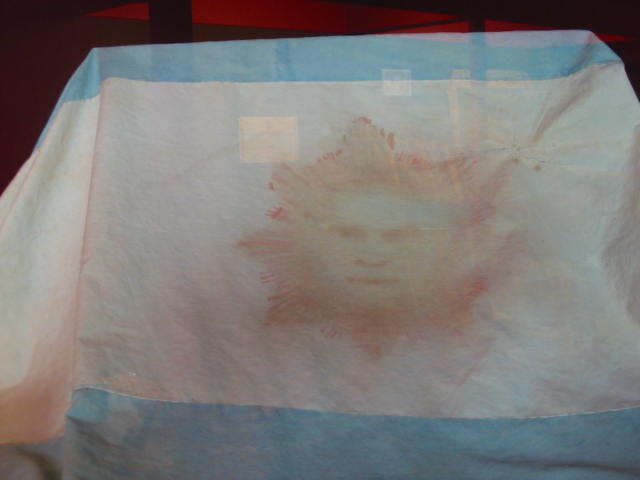
Handmade flag. Museo Regional Desiderio Torres. Sarmiento, Argentina. photo © Lorraine Caputo
Sarmiento
– 430 kilometers southeast of Esquel / 480 kilometers south-southwest of Trelew
Sarmiento was founded by a joint group of Welsh and Italian immigrants – and so has a different ambience than other the other Welsh towns in Argentina’s Patagonia. It is the youngest of the Welsh settlements (founded in 1897) and the southernmost. You can learn more about the indigenous and colony history at Museo Regional Desiderio Torres (Calle 20 de Junio 45).
What makes little-visited Sarmiento such an exciting destinations is its prehistoric manifestations. Right in town is Parque Temático Paleontológico Valle de los Gigantes which features life-size representations of all the dinosaur species found in the area. Monumento Natural Provincial Bosque Petrificado Sarmiento (38 kilometers southeast of Sarmiento) is a 1,880-hectare petrified forest with three hiking trails. Out towards the Andean foothills is Alero de Manos Pintadas, a rock canvas of painted hands (60 kilometers west).
The second weekend of February is the Festival Interprovincial de Doma y Folklore, featuring rodeo events, concerts and artisan displays. Festival de Sarmiento, a celebration of the town’s anniversary, occurs 21 June.
